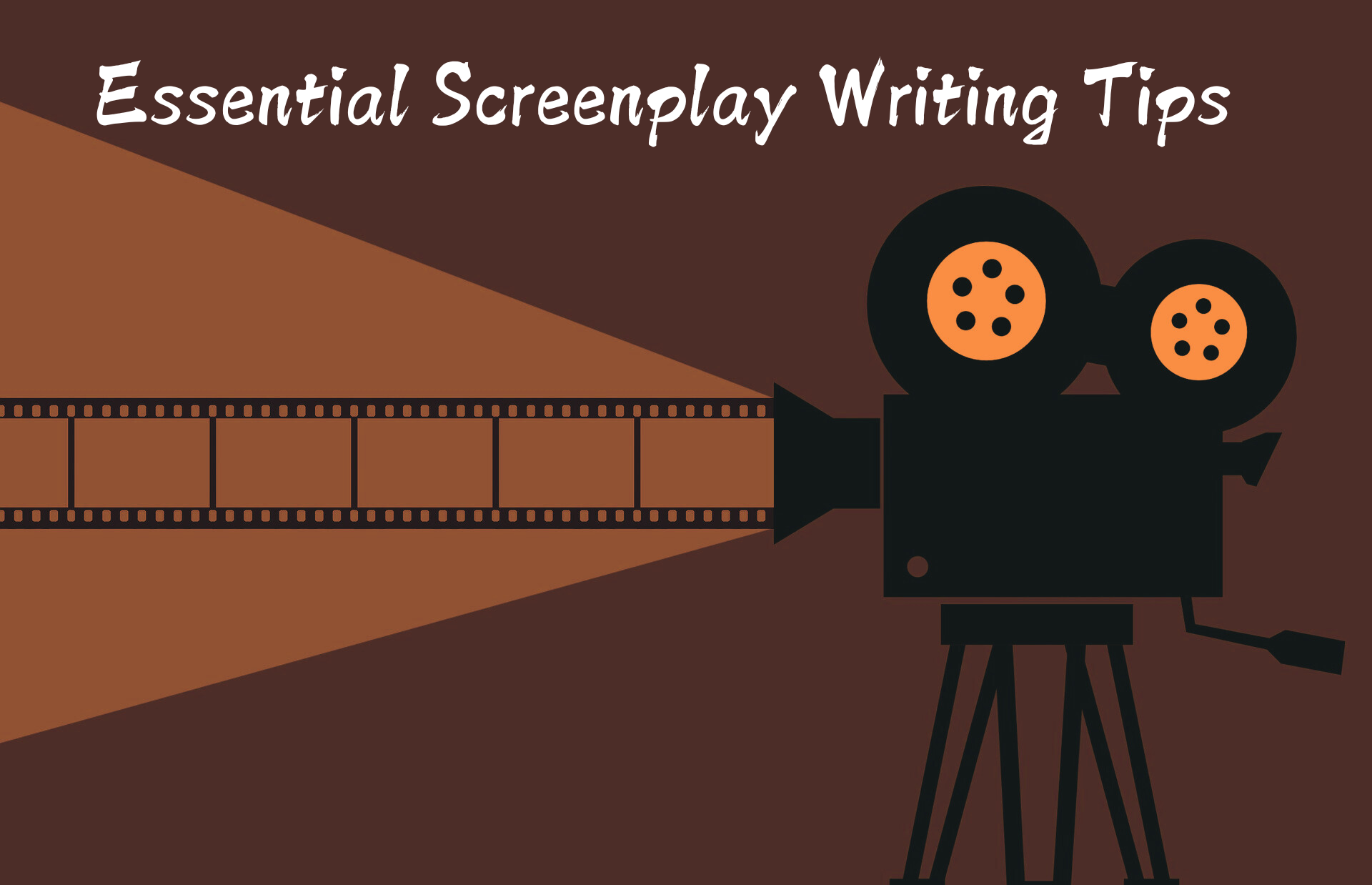So, you’ve got a killer idea for a screenplay, but now what? Writing a compelling screenplay is no small feat, but with the right approach, you can turn your idea into a script that grabs attention and keeps readers hooked. Here are my top ten tips to help you on your journey, complete with examples from some of the most iconic films.
1. Start with a Strong Concept
Everything begins with a great idea. Your concept should be clear, concise, and compelling enough to be summed up in a sentence or two. The concept behind Inception—exploring dreams within dreams—immediately grabs attention and allows for a complex, layered narrative that plays with time and reality. The tagline, “Your mind is the scene of the crime,” encapsulates the entire premise in a single line. This concept is so intriguing that it instantly hooks the audience and sets the stage for a unique narrative. Consider the logline:
“A thief who steals corporate secrets through the use of dream-sharing technology is given the inverse task of planting an idea into the mind of a CEO.”
This one-sentence summary encapsulates the essence of the film and piques interest.

A strong concept also makes it easier to develop a treatment—a detailed summary of your screenplay that outlines the main story, characters, and arcs. A well-crafted treatment is essential for getting your script noticed by industry professionals.
2. Develop Relatable Characters
Characters are the heart of your story. They should feel real and multi-dimensional, with strengths, flaws, and desires. Take Forrest Gump, for instance. Forrest is a simple man with a kind heart, and his innocence and optimism make him incredibly relatable. His journey through historical events is compelling because we care about him.
One of the most memorable lines from Forrest Gump is, “Life is like a box of chocolates. You never know what you’re gonna get.” This quote perfectly encapsulates Forrest’s worldview—simple yet profound. His character resonates because he’s someone we can all root for despite his challenges.
Creating relatable characters is crucial. Professional coverage can provide insights into whether your characters resonate with readers and offer suggestions for making them more engaging.
3. Focus on Screenplay Structure
A well-structured screenplay is like a well-built house. It needs a solid framework to support all the other elements. The Shawshank Redemption is an excellent example of a story with a strong structure. It follows a clear three-act structure, with a beginning that sets up the stakes, a middle that builds tension, and an ending that delivers a satisfying resolution.
Consider how the film opens with Andy Dufresne being sentenced to two life terms for murders he didn’t commit. This sets up the stakes immediately. The middle section builds tension as Andy adjusts to life in prison, forms alliances, and starts working on his escape. The climax, where Andy finally escapes and exposes the corruption of the warden, is both inevitable and surprising.
When writing your screenplay, consider developing a detailed treatment to map out your story’s structure. This can help you stay on track and ensure each act has its own arc.
4. Write Engaging Dialogue for Your Screenplay
Dialogue should be sharp, purposeful, and true to your characters. In Pulp Fiction, the dialogue is not only engaging but also reveals character and drives the plot forward. Think of the iconic conversation between Jules and Vincent discussing the “Royale with Cheese” in a car. This dialogue is seemingly trivial, but it reveals a lot about the characters and their world.
Here’s a snippet:
– Vincent: “You know what they call a Quarter Pounder with Cheese in Paris?”
– Jules: “They don’t call it a Quarter Pounder with Cheese?”
– Vincent: “No, man, they got the metric system. They wouldn’t know what the fuck a Quarter Pounder is.”
– Jules: “Then what do they call it?”
– Vincent: “They call it a ‘Royale with Cheese.'”
This exchange is humorous, memorable, and character-driven. It gives us insight into the everyday lives of these hitmen, making them more relatable despite their violent profession.
If your dialogue feels flat or unnatural, professional feedback can offer specific advice on how to improve it.
5. Show, Don’t Tell

Screenwriting is a visual medium, so let your scenes do the talking. Mad Max: Fury Road is a perfect example of “show, don’t tell.” The film’s opening scene introduces us to Max’s world—an apocalyptic wasteland—without a single word of dialogue. Instead, the visuals of desolate landscapes, brutal warlords, and endless car chases tell us everything we need to know.
Consider this: when Max is captured by Immortan Joe’s war boys, the scene is visceral, chaotic, and immersive. The audience experiences Max’s fear and desperation without any exposition, purely through the action on screen.
This principle is crucial in your screenplay, and it’s something that our coverage service often focuses on. If your script relies too heavily on exposition, professional coverage can suggest ways to make your storytelling more visual and dynamic.
6. Pace Your Story/Screenplay Well
Pacing is crucial in keeping the audience’s attention. The Dark Knight is a masterclass in pacing, balancing intense action scenes with quieter moments that develop characters and plot. The story never feels rushed or dragged out, keeping viewers on the edge of their seats.
For instance, the opening bank heist scene introduces us to the Joker and sets a fast pace right from the start. This pace continues throughout the film, with high-stakes action sequences like the chase through Gotham and the tense, psychological standoffs between Batman and the Joker.
When writing your treatment, pay attention to how the pacing is outlined. A well-paced story will make your treatment more compelling.
7. Create Conflict and Tension
Conflict is the engine that drives your story. Whether it’s internal conflict within a character or external conflict between characters, it’s what keeps the story interesting. Consider Gladiator, where Maximus’s quest for vengeance against Commodus fuels the entire narrative, creating high stakes and constant tension.
In Gladiator, one of the most memorable lines comes during a confrontation between Maximus and Commodus:
– Commodus: “The general who became a slave. The slave who became a gladiator. The gladiator who defied an emperor. Striking story!”
– Maximus: “Are you not entertained?”
This physical and emotional conflict drives the narrative forward, keeping the audience invested in Maximus’s journey.
When you’re working on your screenplay, consider how well your conflicts are integrated into your story.
8. Revise and Rewrite Your Screenplay
Your first draft is just the beginning. Writing is rewriting, as they say. Even the most iconic films, like Star Wars, went through extensive rewrites before becoming the masterpieces we know today. George Lucas’s original draft of Star Wars was vastly different from the final product, but through revisions, the story became tighter and more focused.
Early drafts of Star Wars included characters like Luke Starkiller and Anakin Skywalker as separate individuals. Through revisions, Lucas combined elements and refined the story to create the characters we now know as Luke Skywalker and Darth Vader, adding depth and focus to the narrative.
This is where coverage can be particularly useful. A fresh perspective can help you see areas that need improvement and give you the push to make those necessary changes. If you’re struggling with a particular section of your screenplay, consider getting feedback from a professional to guide your revisions.
9. Get Feedback Early and Often
Don’t wait until your script is “perfect” before sharing it with others. The Matrix is an excellent example of a film that benefited from early feedback. The Wachowskis worked with producers and peers to refine their script, resulting in a groundbreaking film that pushed the boundaries of storytelling.
In fact, the original script of The Matrix was more complex and harder to follow. Feedback helped the Wachowskis streamline the narrative while keeping its innovative ideas intact, leading to a more coherent and engaging story.
Coverage writing services are an excellent way to get professional feedback early in the process. By getting coverage on your draft, you can identify potential issues and address them before they become major problems.
10. Stay Persistent and Keep Writing
Screenwriting is a marathon, not a sprint. Rejection is part of the process, and even seasoned writers face it regularly. The key is to keep writing, keep learning, and keep improving. Every script you write will make you a better writer, so stay persistent and never give up on your passion.
Persistence paid off for Rocky. Sylvester Stallone was rejected numerous times before finally selling the script and starring in the film himself. The line, “It ain’t about how hard you hit. It’s about how hard you can get hit and keep moving forward,” reflects Stallone’s own journey as a writer and actor.
Persistence also means seeking the right tools and services to improve your work. Whether it’s getting coverage to refine your screenplay or crafting a treatment that sells your idea, these steps are crucial in your journey as a screenwriter.
By following these tips, you’ll be well on your way to crafting a screenplay that stands out. Remember, every great script started with a rough draft, so don’t be afraid to put your ideas on the page and see where they take you. Happy writing!





Pingback: Top 5 Screenwriting Mistakes and How to Avoid Them